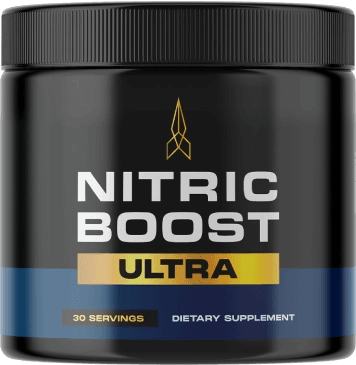Introduction
Building muscle is a common fitness goal for many men, whether it’s to improve appearance, boost strength, or enhance athletic performance. However, muscle growth isn’t about quick fixes or endless hours in the gym—it requires a strategic approach based on solid science.
In this article, we’ll explore the proven methods to build muscle effectively and efficiently. From training principles and nutrition to recovery and mindset, you’ll get everything you need to pack on lean muscle mass faster.
Understanding Muscle Growth: The Basics of Hypertrophy
Muscle growth, or hypertrophy, happens when muscle fibers repair and enlarge after being subjected to stress. This stress comes primarily from resistance training. The key drivers for muscle growth are:
- Mechanical tension: Applying enough resistance to challenge muscles
- Muscle damage: Small tears in muscle fibers that trigger repair
- Metabolic stress: The “burn” from exercise that promotes growth signals
To build muscle fast, you want to maximize these factors while allowing your body to recover properly.
1. Follow Progressive Overload
Progressive overload means gradually increasing the demands on your muscles. This can be done by:
- Increasing weight lifted
- Adding more reps or sets
- Reducing rest time between sets
- Improving exercise technique for greater muscle activation
Without progressive overload, your muscles won’t have a reason to grow.
2. Train with the Right Volume and Frequency
Research shows that training each muscle group 2-3 times per week is optimal for muscle growth. Beginners might start with full-body workouts, while intermediates can split workouts by muscle groups.
A typical hypertrophy workout involves:
- 3-5 sets per exercise
- 6-12 reps per set
- Moderate rest intervals (30-90 seconds) to maintain metabolic stress
This combination balances muscle fatigue and recovery.
3. Choose Effective Exercises
Compound exercises recruit multiple muscle groups and allow you to lift heavier weights, which is great for muscle building. Include:
- Squats, deadlifts, lunges for legs and glutes
- Bench press, push-ups, dips for chest and triceps
- Pull-ups, rows, lat pulldowns for back and biceps
- Overhead presses for shoulders
Isolation exercises (like bicep curls or leg extensions) help target specific muscles but should complement, not replace, compound movements.
4. Prioritize Nutrition: Eat to Build Muscle
Muscle growth requires adequate calories and nutrients:
- Protein: Aim for 1.6-2.2 grams per kilogram of body weight daily. Protein provides the building blocks (amino acids) needed for muscle repair and growth.
- Calories: To gain muscle fast, you need a calorie surplus — eating more calories than you burn. Track your intake to ensure you’re fueling growth without excessive fat gain.
- Carbohydrates: Provide energy for workouts and help replenish glycogen stores. Include whole grains, fruits, and vegetables.
- Healthy fats: Support hormone production and overall health.
5. Optimize Recovery and Sleep
Muscle growth mostly happens outside the gym, during rest and recovery. Key points:
- Get 7-9 hours of quality sleep nightly to support hormone production and tissue repair.
- Allow at least 48 hours between working the same muscle group intensely.
- Use active recovery (light movement, stretching) to promote blood flow.
6. Consider Supplements Wisely
While not necessary, certain supplements can aid muscle building:
- Whey protein: Convenient source of high-quality protein
- Creatine monohydrate: Proven to improve strength and muscle mass gains
- Branched-chain amino acids (BCAAs): May reduce muscle soreness
- Beta-alanine: Can enhance workout endurance
Always prioritize whole foods and consult a healthcare professional before starting supplements.
7. Avoid Common Pitfalls
- Neglecting form: Poor technique can cause injury and limit gains.
- Overtraining: Excessive volume without recovery hampers progress.
- Inconsistency: Muscle building requires regular effort over weeks and months.
- Unrealistic expectations: Significant muscle gain takes time; rapid changes are mostly water or fat.
Sample Muscle-Building Workout for Beginners
Day 1: Upper Body
- Bench press – 4 sets of 8 reps
- Bent-over rows – 4 sets of 8 reps
- Dumbbell shoulder press – 3 sets of 10 reps
- Bicep curls – 3 sets of 12 reps
- Tricep dips – 3 sets of 10 reps
Day 2: Lower Body
- Squats – 4 sets of 8 reps
- Deadlifts – 3 sets of 6 reps
- Lunges – 3 sets of 12 reps per leg
- Calf raises – 3 sets of 15-20 reps
Day 3: Rest or light cardio
Repeat cycle 2-3 times per week.
Conclusion
Building muscle fast is about working smarter, not just harder. By applying principles like progressive overload, training with proper volume, eating a muscle-supportive diet, and prioritizing recovery, you’ll see significant gains. Remember, patience and consistency are your best friends on this journey.
Ready to start? Get to the gym or home workout space, lift smart, fuel well, and watch your muscles grow!




